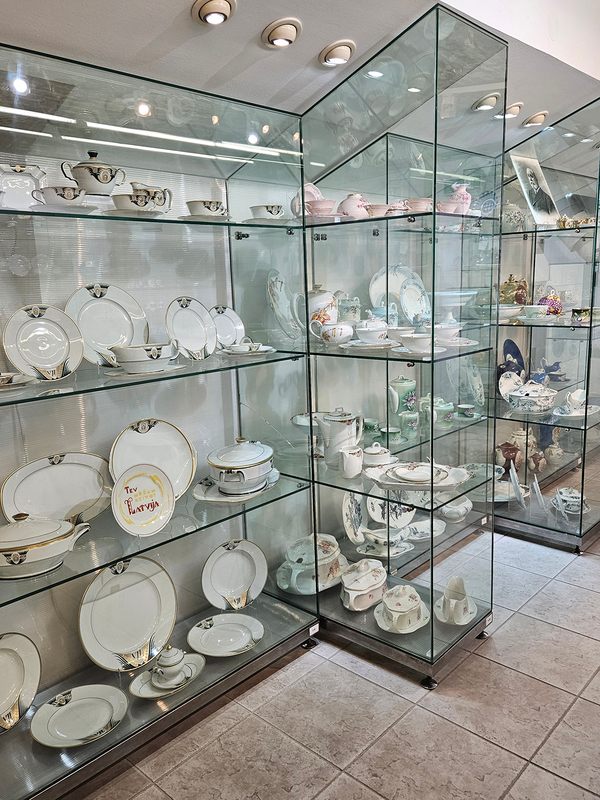In the 19th century, two porcelain factories (the Kuznetsov Factory, owned by Sidor Kuznetsov and the Jessen Factory, owned by Jakob Karl Jessen) were established in Riga, then part of the Russian Empire. Both produced fine pottery and porcelain items during the empire’s final decades and through Latvia’s first period of independence in the early 20th century. During the Soviet era, the companies were nationalized and then merged to create the Riga Porcelain and Faience Factory, later renamed the Riga Porcelain Factory. It continued to produce high-quality porcelain through the 20th century, but after Latvia regained independence in the 1990s, it faced financial difficulties and declared bankruptcy before the end of the decade.
Following the Riga Porcelain Factory’s closure, its collection, spanning work created over the centuries by the company and its predecessors, was handed over to the city of Riga, which opened the Riga Porcelain Museum in 2001. The basement collection features dishware and statues made for the mass market in the 19th and 20th centuries, special commemorative pieces created during the Soviet era, and new porcelain works by local artisans in the 21st century, some of which are atypical and erotic. Additionally, the workshops on the ground floor remain in active use, and visitors can even spend time painting their own porcelain.


